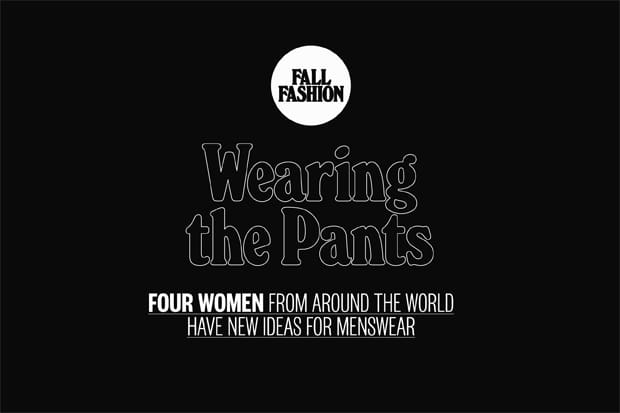Though it seems all feminine, fabulous tulle, the fashion universe can be as much a man’s world as any other profession. In 2008’s documentary The Last Emperor, Valentino Garavani, one of the 20th century’s archetypical designers, struts around imperiously in a shiny suit. Roaming his atelier, tanned and fresh from his yachting trips and visits to French mansions with Gwenyth Paltrow, he sketches pretty pink dresses and nitpicks misplaced sequins while a staff of modestly dressed little old ladies work tirelessly to do the actual labor of sewing and stitching the designs. It’s a typical scene—a man dictating the length (and morality) of hemlines and cleavage or how painstakingly tall a woman’s heel will climb while women are left to do the job of actually making those styles work, whether they’re squeezing into tight waists or pinning taffeta until their fingers bleed.
Even with a dearth of women designing for women, it’s even rarer to find Valentino’s analog, a woman designing for a man. And who’s to say women shouldn’t have some say in the way men dress? In the past decade or so, men’s high fashion has taken on an increasingly important role in the style business. Once an addendum to women’s shows, they are now a pageant all their own. About a billion blogs have sprung up dedicated to the study of denim quality and Vibram-soled workboots. So much of this new interest, though, has focused on clothes that are traditionally, narrowly masculine, new brands making updates of old-fashioned workwear and old brands succeeding by returning to their roots, reissuing the sunglasses that Steve McQueen wore or the overalls that cowboys wore to rustle steer. Men’s fashion in 2011 sells the image of the hardworking American male, even while so many of those hardworking textile jobs have been shipped overseas for cheaper labor. Nostalgia is almost never honest.
In sharp contrast to the harsh realities of fashion, we were very excited to find four women from around the world whose current fantasies for men have nothing to do with cattle-ranching. The princely caftans and delicate silk scarves in Siriorn Teankaprasith’s line, Painkiller, from Thailand possess more soft pride than hard-edged toughness. Y’OH’s Kara Messina has turned classic streetwear on its head with wildly colorful, vibrant African prints she finds around London fabric stores. Oslo-based Camilla Bruerberg makes shredded, see-through sweaters and neon accessories that show what an androgynous, mutant future might look like. And New York’s Lizzie Owens’ Highland guy loafs around with stoners and hacky-sack players more than Alpha-dogs. Interviewing these four designers, we uncovered plenty of ideas about what it means to dress a man, and be a woman, in the 21st century.
—ALEX FRANK
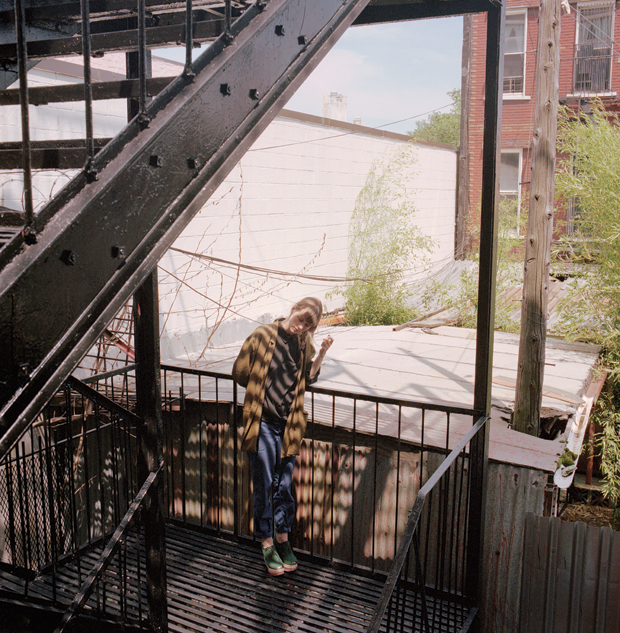
DESIGNER: Lizzie Owens
BRAND: Highland
LOCATION: New York City
Lizzie Owens seems a little uncomfortable in her shoes when she enters Roberta’s, an out of the way restaurant in Brooklyn. A slender, six-foot sandy-blonde, her brand new Prada wedges, a rare big-ticket indulgence, push her up to a willowy six feet five inches. Alternately sure-footed and nervous, Owens is slowly coming into womanhood, confessing that at age 30, she’s just learning how to cook more than a salad, and only recently began dressing like a lady. A reserved tomboy from Salt Lake City, Owens is, oddly enough, finding a feminine balance at the same moment she’s stepping into her own, designing a line of men’s clothing called Highland.
Before Highland, she spent four years sketching expensive knitwear for TSE after graduating from RISD with a degree in women’s apparel. But true to her art school roots, she quit TSE to couch surf across Los Angeles and create costumes for MGMT. After two years in LA, Owens was approached by her cousin Cramer Tolboe and family friend Mike Franks to design a menswear line. Tolboe and Franks had business experience in fashion wholesaling, but needed creative talent. With few full-time job prospects, Owens jumped at the opportunity.
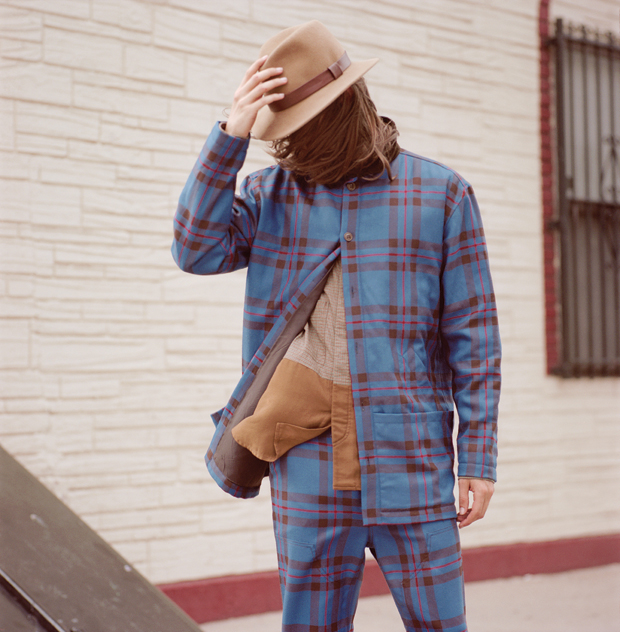
As a woman working with two guys and making men’s clothes, Owens grapples with her fair share of doubts. “Is my perspective valid as a woman?” she asks. “I question myself because I’m ultimately not the person wearing it.” Highland’s growing pains have occasionally led to creative disagreements with her business partners, the trio’s vaguely delineated roles initially leading to ego-driven head butting. “It was about isolating who I am as a designer,” Owens says. “Over time, I’ve just realized how much an idea gets weakened by three people coming to one conclusion.” Owens has started to put her foot down, asserting her role as the head designer, and Highland has grown around her vision.
In just three seasons of designing the collection, Owens has covered much ground. The first was a bright re-imagining of her parent’s old Patagonia camping gear. Then she channeled the outsized fantasy world of MGMT into separates printed with Aztec imagery and shirts patterned with old maps. And finally, this season, she gets at something a little closer to her utilitarian ideal with button-downs, corduroy parkas and loose trousers—unfussy staples that retain a sophomoric charm. Each collection further distills Owens’ notion of the “Highland guy,” someone unafraid to wear color, unconcerned with trends and willing to invest in a durable wardrobe. In short, it’s how she would dress if she were a boy. “I’m not trying to sell to just whoever I can, I’m trying to find the right fit. It feels more like me.” Before she heads back to work, a waitress pops over to compliment Owens’ new shoes that she spotted across the room. Owens, still fighting sheepishness, stretches out her foot and accepts the praise.
—DEIDRE DYER
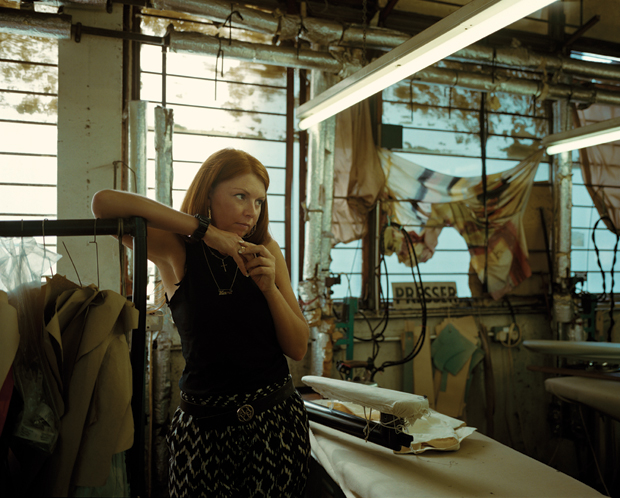
DESIGNER: Kara Messina
BRAND: Y’Oh
LOCATION: London
The word “streetwear” conjures vaguely unfortunate images of a bunch of dudes circa-2005 decked out in DayGlo sweatshirts with obnoxious clashing patterns covering every square inch. At its heart though, streetwear still has an origin in the practical gear skaters wore on a regular basis. Enter designer Kara Messina’s Y’OH line, which is somewhere between a clothing company and an all-purpose lifestyle brand with roots in grime music, skating and vivid, but tasteful African patterns that pull collared shirts out of their now too-standard checked rut. “Someone pointed out to me that my brand wasn’t really streetwear and it wasn’t really high fashion and it wasn’t really anything,” she says. “They insisted that I not label it.”
But to call Messina a complete fashion outsider would be wrong. She’s just grounding well-made, utilitarian clothing in a way that hasn’t been done in a long while. She’s looking at what real people she knows are wearing and building from there. “It’s an homage to all the people I hang out with, really,” Messina says. “I bumped into a friend, and he had the same jacket on that he’s been wearing for ages. I prefer it when people have a smaller wardrobe and wear a certain number of items. I think it gives off a clearer identity.”
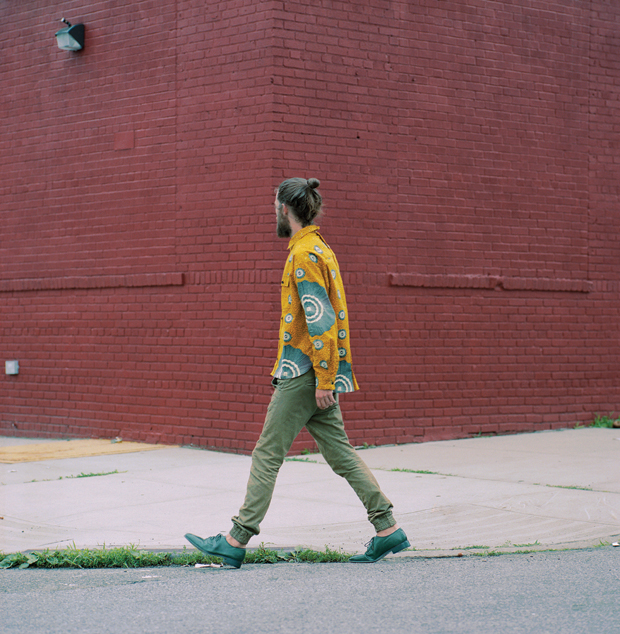
Before she spent her days getting wild with fabric, Messina stuck to the basics long enough to get sick of them. “Everything before this—I designed stuff that was black, beige, beige-y, grey or white,” she says. After abandoning the safe world of plain shirts with collars in solid colors, Messina stocked up on actual African prints she found in markets around London and decided to just make what she wanted to make, without worrying if anyone was going to like it. “The way I started this brand and the way that works for me is I kind of just wake up in the morning and say, Right, what do I have to do today?” she says. “And it’d be like, Make a pattern for a shirt. That’s what I do.”
While we’re probably not going to be opening our closets to racks full of neon zebra or peacock patterns with any regularity, that’s not what Messina is shooting for with Y’OH. “No one goes all-out and dresses up anymore,” she says. “I used to see people on Sundays going to church wearing head-to-toe African prints, and I really respected that. I want my shirts to have the same integrity.” Her hope is that the clothes will quietly infiltrate in the same way that camouflage did in the ’90s, finding a home on the bodies of Messina’s friends and anyone else daring enough to make something new seem totally normal.
—SAM HOCKLEY-SMITH
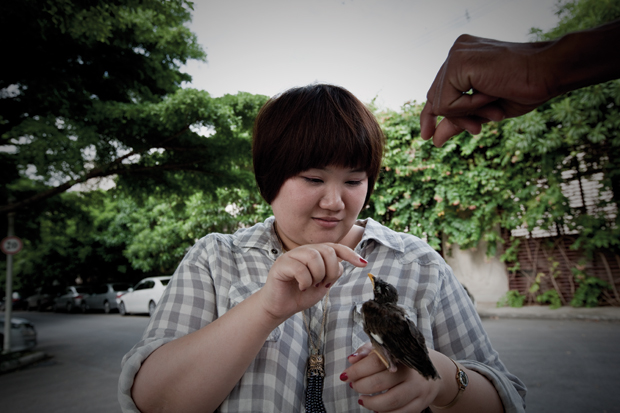
DESIGNER: Siriorn Teankaprasith
BRAND: Painkiller
LOCATION: Bangkok
Dress-like caftans and short shorts can be a hard sell for guys, but Siriorn Teankaprasith is committed to getting men to embrace draping and skin-showing. “Real men wear whatever they want to wear,” says the Bangkok-based Teankaprasith. “Some guys worry that androgynous clothing makes them gay or something, but it’s your personality that matters. And I find androgynous guys to be quite attractive, anyway.” Perhaps seeking softer Parisian palettes, Teankaprasith hopped on a plane to design school in France at 17, spending eight years there, studying menswear and interning in master tailor Pierre-Henri Mattout’s workshop. “I had always felt like a little bird in cage when I was stuck in Thailand,” she says. “In Paris, it’s so old school and you work so hard. When I was interning, I even had to cook for the studio. But I loved it. It was an education.”
Teankaprasith was disappointed to leave Paris after studying, nervous about whether her big ideas about menswear would fly back home in Thailand. And she had reason: the menswear label she started when she got home failed quickly. Teankaprasith felt let down by her country’s sense of style, imagining that her clothes would have done better in fashion capitals like New York and Paris. “I just don’t think Thailand was ready,” says Teankaprasith. “Big, baggy sportswear was really popular in Asia at the time, everything was so relaxed.” Restless, she returned to Paris in 2005 to get a master’s degree in men’s fashion before heading back to Bangkok in 2009. Since then, she’s noticed more and more dapper gentlemen replacing their track pants with proper trousers. Re-energized by all of the tidying up, Teankaprasith opened Painkiller, a small store filled with her own designs of upper crust crisp blazers and crinkly linen vests made for, as she says, “artsy gentlemen.” The store is stocked with basics from the pre-casual age, like straw fedoras that would make Ernest Hemingway proud and pants cuffed to Capri-like lengths. Even Painkiller’s T-shirts feel hearty and thick—tees you’d want to tuck in, not leave flailing. “Guys here finally, finally want to dress up,” she says. “Sometimes a guy will come into my shop and tell me everything is weird. But he’ll come back another day, much later, and buy something. They are taking a second look. They want to dress proud.”
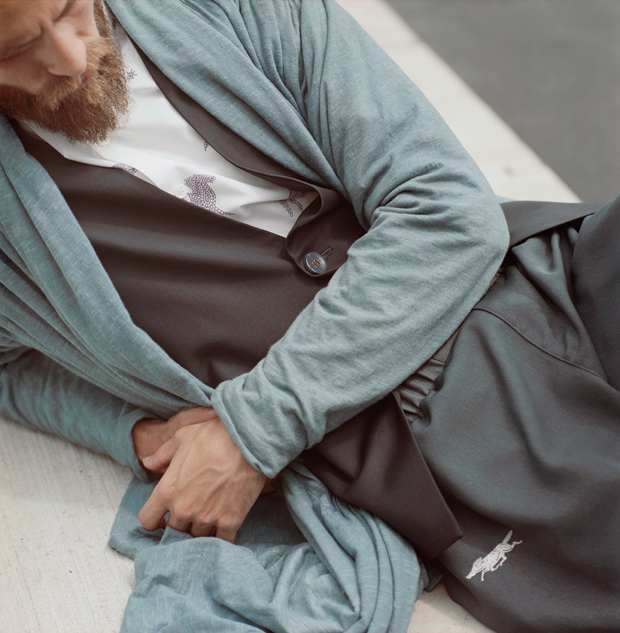
Painkiller’s fall collection especially evokes those beautiful feelings of self-respect. The sky blues and regal soft silks are inspired by a Persian story about a prince who was so powerful he could fly. “I just kept imagining him flying wherever he wanted. I realized that if you want something done you have to do it yourself,” says Teankaprasith. “Men’s high fashion is not in our culture. Thai tailors couldn’t and wouldn’t make these clothes. So we just had to make everything ourselves.” Something she hasn’t made yet are coats, which are non-existent even in her fall collection. Teankaprasith attributes that to Thailand’s sweltering weather, but at some point, even that won’t stop her. “I’m working on it,” she says. “I’d like people in Paris and New York to be able to buy these clothes, too.” Sewing everything in house has kept Teankaprasith adaptable and on her toes. Painkiller’s harem pants, constellation-print smocks and feathery cravats are made-to-order, so she’s learned how to dress guys of every size and shape. “My brothers, they aren’t so skinny. They’re huge,” she says. “But I still want to make clothes for them. We may have a so-so physique, but if we wear beautiful clothes and have a great style, we are beautiful.”
—ALEX FRANK
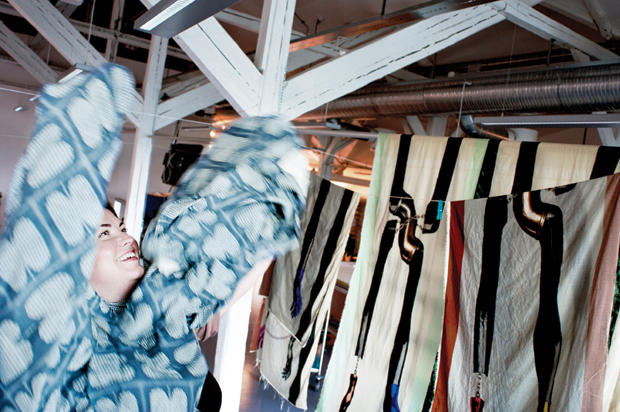
DESIGNER: Camilla Bruerberg
BRAND: C/Bruerberg
LOCATION: Oslo
To scroll through Camilla Bruerberg’s designs is to chart a bizarre sort of androgyny. High-cheekboned men model with long hair pulled back, their bare chests exposed by windows of chiffon patched into slouchy sweaters. A thigh-length transparent top is digitally printed with cartoonish drips of neon ooze. Strands of lime green yarn dangle from a crooked bird’s nest of a hat and fall over the model’s face like Veronica Lake’s bangs. The fact that Bruerberg discovered fashion almost by accident helps explain her work’s bold experimentation. Hardly one year into developing her C/Bruerberg label, she possesses the genuine play of a person who still has new things to try. “I was studying sociology,” she says, “but I was just itching to do something with my hands, so I started to flick through what schools were available in Norway, and I just stumbled upon fashion. I thought, yes, let’s make some clothes.”
Bruerberg entered the Oslo National Academy of the Arts, where she immediately took to menswear. “It’s the opportunity to work with clean lines,” she says, “not worrying about boobs and hips and all this curvy stuff. I just like the simplicity of the male body, instead of women’s, which come with all the drama.” Using this plainer canvas, Bruerberg’s textile-driven work revels in its own folds, abundantly rolling over hard, straight shoulders. Though unquestionably designed to showcase the male form, with see-through panels revealing a man’s pectorals or subtler works engaging his arms and back, Bruerberg’s collections have found a number of female admirers, and she’s just fine with that. “Women like my clothes, and I think that’s cool. If they want to wear it, that’s super cool.”

The biggest challenge for Bruerberg’s work—and maybe its biggest inspiration—is existing within the tiny, conservative Norwegian fashion world. “There’s a lot of focus in Scandinavia to be as commercial as possible and to be very practical,” she says, “and I think that scares young designers who have other ideas and feel they shouldn’t show here.” Far from the pants-and-sport-jacket standard Bruerberg calls the Norwegian uniform, her clothes embrace a Rococo, overwrought luxury that, even at its simplest, places her on the outside of the outside—geographically removed from European fashion capitals and stylistically rejecting the understated local scene. But living and working in Oslo affords Bruerberg a rare opportunity to be a real pioneer. “Norway has a chance to find our own voice and what’s special about us, instead of copying Sweden,” she says. “I really hope I can open things up for other people with guts.”
—DUNCAN COOPER
